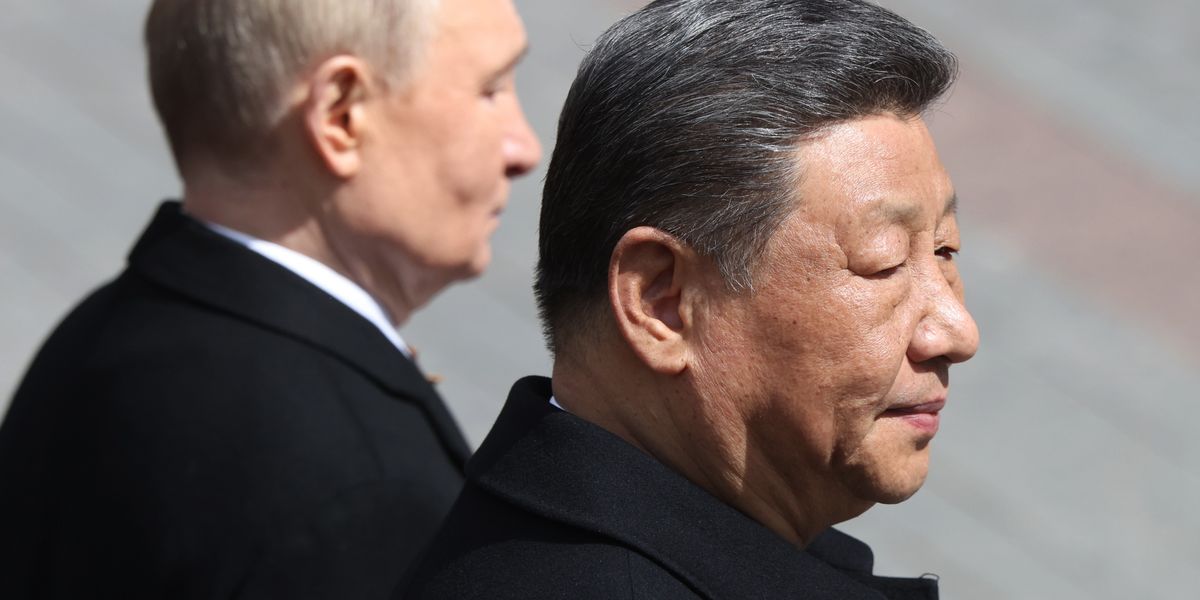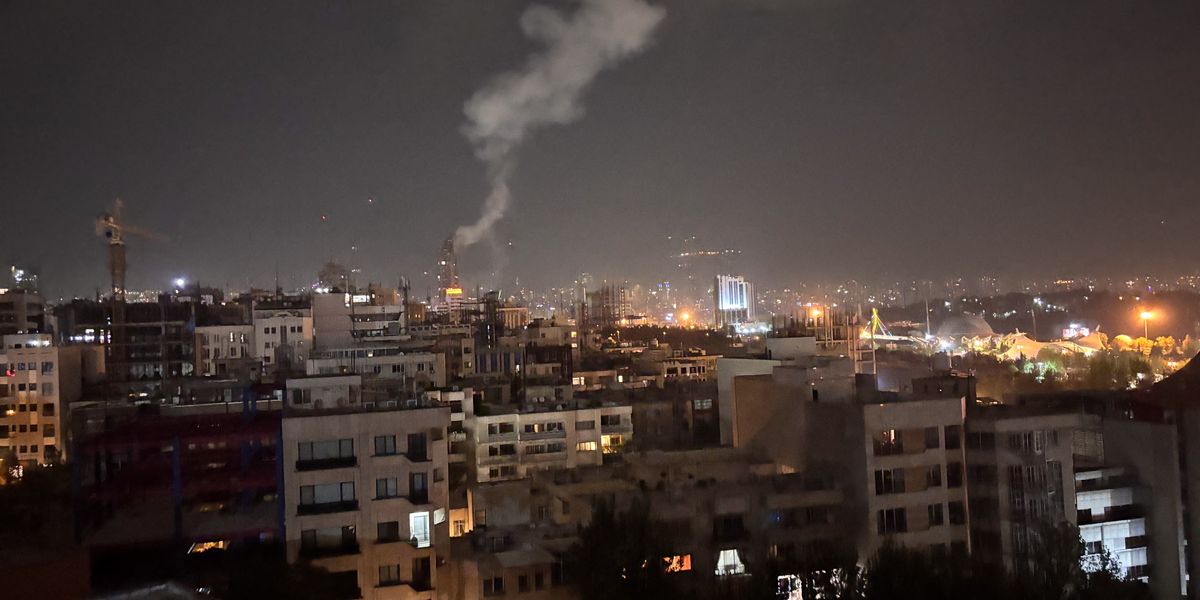It had been more than 26 years since the general public had heard the sound of his voice. The leader of the Kurdistan Workers' Party (PKK) Abdullah Ocalan – detained by Turkey on the prison island of Imrali since 1999 – spoke at a press conference on Wednesday, July 9. He stated that he “believes in the power of politics and social peace, not in arms”.
Since February 2025, Abdullah Ocalan has been speaking out repeatedly in favour of a peaceful settlement to the conflict. These announcements surprised as much as they raised hope. Since the 1980s, the PKK – officially created in 1978, and considered a terrorist organisation by the European Union and the United States – has been fighting with weapons for recognition of the Kurdish identity, a people scattered between Turkey, Iraq, Syria, and Iran.
On March 1, the group announced that it was moving towards a ceasefire. Although Turkey has offered no guarantee that the fighting will stop, the party announced its dissolution on May 12, 2025, at its twelfth congress.

On July 11, PKK fighters will symbolically lay down their weapons in the Sulaymaniyah region.
However, fighting between the Kurdish militant group and Turkey has not ceased. Historic PKK leaders such as Mustafa Karasu denounce “a blockage” caused by the “government's attitude”.
The clashes are taking place outside Turkish territory. Since the PKK left the Turkish mountains in 2013, Turkey has been pursuing guerrilla warfare in the mountains of Iraq. In June 2024, it announced its intention to create “a 30 to 40-kilometre security corridor across the country's border with Iraq and Syria”. The Turkish army's aim is to neutralise the PKK's network of tunnels in the Gara Mountains.

‘Turkey is unable to seal off the areas it wants to control’
It is from these tunnels that Kurdish guerrillas have been launching attacks against Turkish bases in Iraq for years. These underground tunnels became vital for the PKK to escape the Turkish drones that constantly fly over the area.
This is a conflict that has been stagnating for a long time, according to journalist and doctoral student at France's CERI (Sciences Po/CNRS) Iris Lambert:
For the moment, the main area of confrontation is between the two mountain ranges of Matina and Gara, in the governorate of Duhok [Editor’s note: in Iraqi Kurdistan]. But it's a very mountainous area that the PKK knows perfectly well. So they know the terrain perfectly well. Generally, the Kurdish fighters are divided into small units. They are entrenched in tunnels to escape the constant surveillance carried out by Turkish military drones.
On the other hand, Turkey is stepping up its artillery fire. These strikes are made possible by the fact that the Turks are building a large number of military bases in order to ensure that their territory is well meshed. It has recently been estimated that they have built 136 bases. But Turkey is unable to seal off the areas it wants to control, and the PKK is not making many advances, but is not retreating either. So it's a very fixed situation.
The FRANCE 24 Observers team was able to identify several signs of confrontation despite the announcement of a ceasefire.

On the evening of the PKK's announcement of the ceasefire, pro-Kurdish sources published videos of bombardments by the Turkish army in the vicinity of the village of Guharze.

On the pro-Turkish side, Telegram channels mentioned the intervention of T-129 Atak helicopters in the same area.

‘Turkey is trying to use the ceasefire to its advantage’
In the months following the ceasefire, Turkish strikes increased, as Kamaran Osman, a member of the NGO Community Peacemaker Teams, explains:
On February 27, PKK leader Abdullah Ocalan declared his intention to begin a peace process. If we compare the week following this announcement with previous weeks, we see a 145% increase in Turkish bombings. While there was a slight drop in March, there was a 332% increase in bombings in May compared with March. For example, Turkey carried out 510 strikes in May.
For its part, the PKK only carried out around twenty attacks against Turkish forces. This shows a clear drop in the organisation's activity. In April, the attacks were concentrated on the governorate of Duhok, as Turkey wishes to clear the Gara Mountains of the tunnels they harbour.
For Turkey, this mountain range is strategic because it is the border from which the PKK can reach Turkish territory. Turkey is trying to use the ceasefire to its advantage. Its military is taking advantage of the drop in attacks by the PKK to try to take control of the mountains that it did not previously control. The PKK, for its part, uses this mountain range to reach Syria to the west [Editor’s note: where the Kurdish region of Rojava – a territory controlled by the Kurdish YPG forces – is located] or the Erbil region to the east.
Tunnels bombed
Most of the Turkish army's activity is aimed at Kurdish guerrilla tunnels. The FRANCE 24 Observers team was able to geolocate several images of strikes on the mountains where the tunnel entrances are located.
One of these strikes targeted a tunnel near the village of Belave. According to a pro-Turkish Telegram channel that monitors operations in the region, the bombing was carried out by Turkish army aircraft.
To display this content from Telegram, you must enable advertisement tracking and audience measurement.
We used satellite images to geolocate the bombing, which was filmed at the foot of the village of Belave.

‘Last week, there were more than 40 strikes a day’
Turkey has also targeted valleys where houses are located.
The Observers team was able to geolocate images showing houses directly hit by strikes, as in the village of Spindare on April 17.
According to the Turkish media outlet close to the army, Siyah Ordu, the village of Spindare is used as a “supply point” for PKK fighters, and Kurdish forces have “numerous positions” near this village and the village of Mije.

Rizgar (pseudonym) lived in Spindare:
Over the last three days, bombings decreased. But last week, there were more than 40 strikes a day. Turkey usually targets the village with planes and artillery. All the houses have been damaged, and many have been completely destroyed.
We were forced to evacuate the village in September 2024 because of the fighting. We are not allowed to enter the village. There are 15 other villages around, all of which have been evacuated. Everyone in the village is a farmer, and we depend on our land for our livelihood.
‘Turkey sees civilians as an obstacle to the full deployment of its troops in the region’
Osman says the fate of the village of Spindare is not an isolated case:
Farmers and their homes are often targeted by Turkish bombings because Turkey wants to create a buffer zone. Turkey sees civilians as an obstacle to the full deployment of its troops in the region.
Overall, 185 localities have been completely evacuated. In some cases, residents are unable to return to their villages of origin because of the destruction, as is the case in 405 localities. Turkish army soldiers sometimes set fire to farmland or homes themselves in order to force people to leave. In total, 183 villages have been completely emptied of their population. By targeting civilians, Turkey wants to send a clear message to the inhabitants: you must have no links with the PKK.

Twelve Turkish soldiers killed in a cave
In addition to the bombing raids, Turkish operations on the ground are continuing unabated. On July 6, the Turkish Ministry of Defence announced the death of 12 soldiers. The operation is believed to have taken place in the Duhok governorate.

According to the press release, the soldiers died while inspecting a cave that was being used as a hospital by PKK members. Turkish authorities stated the soldiers were poisoned by methane gas as they were searching for the body of another Turkish soldier who disappeared in May 2022.

The pro-Kurdish media ANF published images of the body of one of the dead Turkish soldiers. According to other sources sympathetic to the PKK, the Turkish soldiers were victims of their own chemical weapons and not of methane poisoning. However, it is not possible to independently confirm or deny this allegation.

On June 21, the Turkish Ministry of Defence claimed to have neutralised a PKK arms cache. This cache of weapons was discovered in the area of the “Pençe-Kilit” Turkish operation.
‘Retaliatory’ strikes announced by the PKK
In its press releases published after the announcement of its dissolution, the PKK clearly states that it reserves the right to defend itself in the event of an attack by the Turkish army.
In total, the Observers team has been able to count five attacks filmed and claimed by the Kurdish guerrillas since the announcement of the unilateral ceasefire. These attacks are carried out using FPV drones, small kamikaze drones that appeared in Ukraine and fly at full speed towards their target, then explode.
To display this content from X (Twitter), you must enable advertisement tracking and audience measurement.

Since the ceasefire was announced, the armed wing of the PKK in Iraq – the HPG – has claimed that two of its fighters have “fallen as martyrs”.

However, despite the drone strikes carried out by its guerrilla forces, the PKK seems determined to show international opinion that it wants to see the ceasefire through, as Abdullah Ocalan made clear again on July 9.










 English (US) ·
English (US) ·